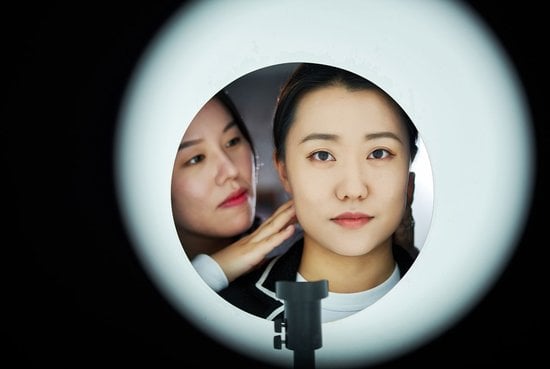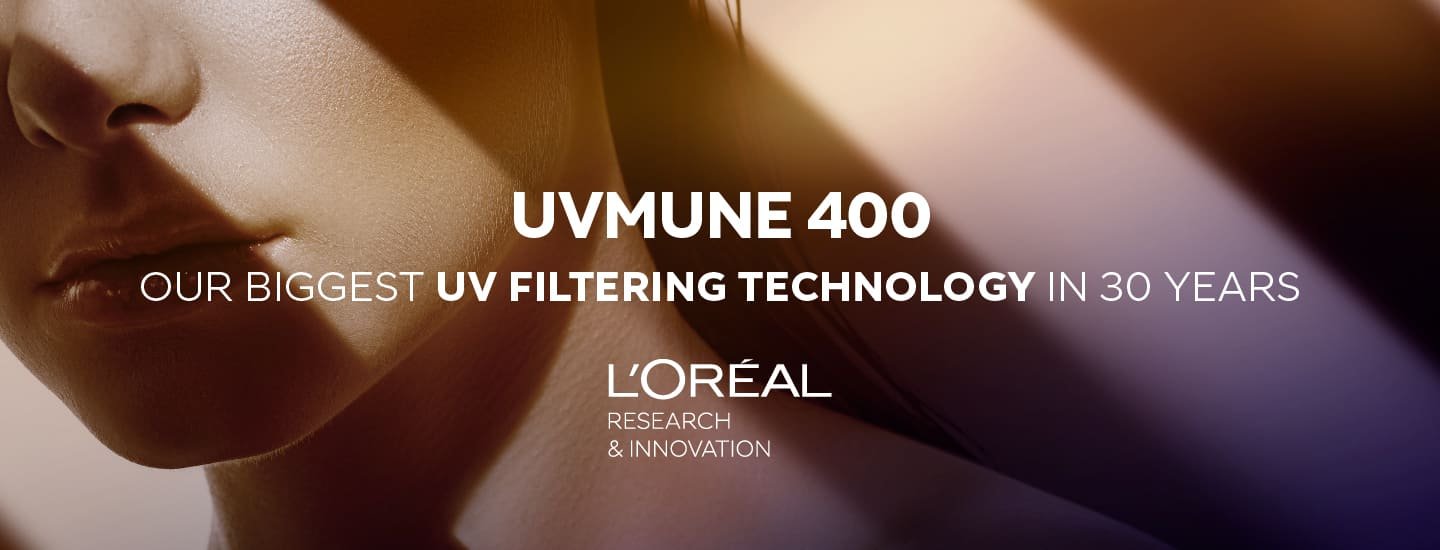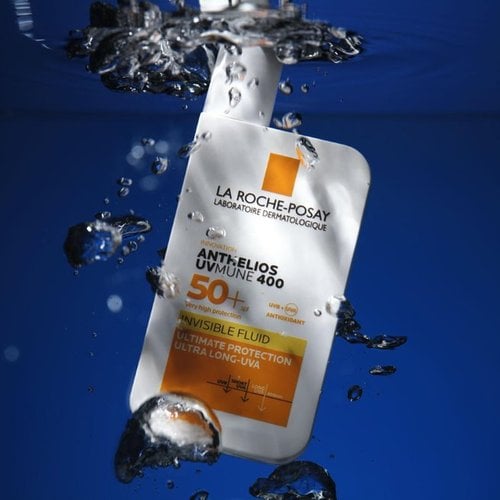UVMune 400, our Biggest Sun Filtering Technology in 30 Years
Protect your skin against deep sun damage
Are you sure that your skin is well protected against sun damage? Ultra-long ultraviolet-A (UVA) radiation, which can pass through cloud cover and glass, is one of the chief causes of skin aging and combines with other UVA and UVB rays to contribute to the development of skin cancer. L’Oréal Research & Innovation proudly presents UVMune 400, our first filtering technology to protect skin effectively against ultra-long UVA. Read on to learn how the experts at L’Oréal Research innovated to provide active protection for your skin and tackle a major public health issue.
L'Oréal Research unveils UVMune 400
Depending on the time of day, the season, altitude, and the weather, your skin is more or less exposed to solar radiation and especially to long UVA.These rays reach your skin all year round. Today, L’Oréal is launching UVMune 400, our first filtering technology to protect skin effectively against ultra-long UVA. A new generation of filters has recently been introduced with Mexoryl 400. The Group is now making its biggest breakthrough in solar innovation in 30 years, having succeeded in potentiating the performance and quality of this filter in a unique technology, UVMune 400.
80%
of aging signs (pigmentation and wrinkles) are caused by exposure to the sun
95%
of UV radiation that reaches the Earth is UVA2
30%
of UV radiation is in the last 20 nm of the spectrum, between
380 and 400 nm (ultra long UVA)
20x
the skin is 20 times more exposed to UVA than to UVB radiation3

UVB, short UVA, and long UVA – how do they affect our skin?
Solar radiation is comprised of ultraviolet (UV) rays of various wavelengths. UVB rays (between 280 and 320 nm) make up at most 5% of UV and are responsible for sunburns. UVA rays account for 95% of the UV rays that reach the Earth and can cause serious skin damage, including aging. UVA is further divided into short UVA (between 320 and 340 nm) and long UVA (between 340 and 400 nm), and among them ultra-long UVA (between 380 and 400 nm). Ultra-long radiation is one of the chief causes of skin aging and combines with other UV rays to contribute to the development of skin cancer.
Discover more about the UV rays and the skin daily protection
Harnessing Scientific expertise for skin health
Drawing on more than 85 years of experience in sun protection and its unique scientific knowledge of skin, L’Oréal Research has spent decades developing a range of patented filters. In 1982, the Group launched Mexoryl SX, a filter that provides effective protection against short UVA. In 1985, L’Oréal came out with Parsol 1789, the first photostabilization patent, which made it possible to filter long UVA rays up to 360 nm. Then in 1989, it released Mexoryl XL, a filter capable of absorbing UVB and short UVA, while also making other filters more effective.
Ten years of research went into designing Mexoryl 400, making UVMune 400 our first filtering technology to provide effective protection against the 30% of solar UV radiation that was not properly filtered until now, namely ultra-long UVA rays between 380 and 400 nm.

UVMune 400 thus helps preventing the skin from the effects of ultra-long UVA on the skin, which include:
• Oxidative stress ;
• Pigmentation ;
• Modification of genes involved in skin cancer ;
• Immune response disruption ;
• Damage caused by photopollution ;
• Photoaging signs such as wrinkles, loss of skin elasticity, and spots.
This discovery represents L’Oréal’s biggest advance in sun innovation for 30 years and addresses a major public health question, namely how to protect against the deep damage caused by ultra-long UVA rays.
« Inventing a solar filtering technology to protect against the previously inaccessible end of the UVA range was a major scientific challenge that our L’Oréal R&I teams successfully met. Their breakthrough has enabled us to provide the most complete solar filter ever and protect skin against all the sun’s harmful effects, even the most insidious. This launch chimes perfectly with the Group’s approach, which aims to provide solutions to public health challenges, such as the risks linked to the skin’s exposure to UV radiation. »
Barbara Lavernos, Deputy Chief Executive Officer in charge of Research, Innovation, and Technology at L’Oréal.

+65
studies were conducted during the development of the new Mexoryl 400 filter
6
Scientific Publications have been Published*
25
patents have been filed for Mexoryl 400
*4 on knowledge of skin damage induced by long UVA rays and the interest of better protecting the skin from this radiation specifically and 2 on Mexoryl 400. Four other publications on the benefits of this new filter are in preparation.

La Roche-Posay: the first L’Oréal brand to benefit from UVMUNE 400 technology
UVMune 400 is a technology capable of delivering broad photoprotection across the entire UV spectrum. La Roche-Posay is the first L’Oréal brand to launch UVMune 400 through its Anthelios franchise. A sun protection pioneer for 30 years, La Roche-Posay has always been at the forefront of this field, working with renowned dermatologists to co-develop products that offer the highest, broadest, and most comprehensive protection.
With Anthelios UVMune 400, La Roche Posay protects against the deep cell damage linked to signs of premature aging and prevents DNA lesions that can lead to skin cancer.
Anthelios UVMune 400 was released in pharmacies in March 2022 and is available as "Anthelios UVMUNE 400 Invisible Fluid SPF50+" and "Anthelios UVMUNE400 Hydrating cream SPF50+".
2Battie and Verschoore. Cutaneous solar ultraviolet exposure and clinical aspects of photodamage. Indian J Dermatol Venerol Leprol. 2012; 78:9-14
3New Insights in photoaging, UVA-induced damage and skin types. 2014. Exp Dermatol. 23(1):7-12